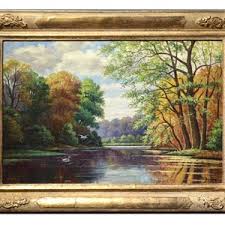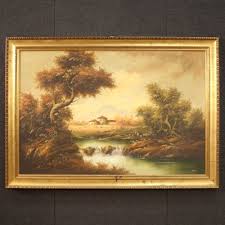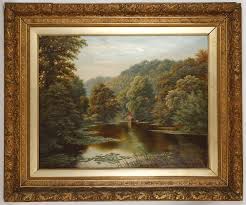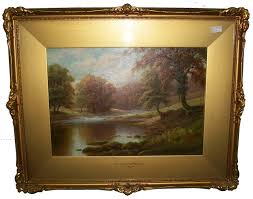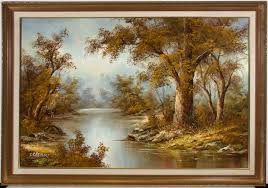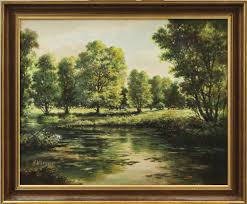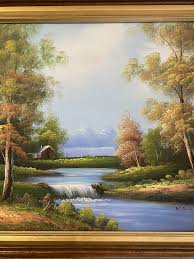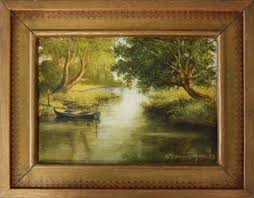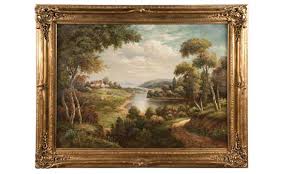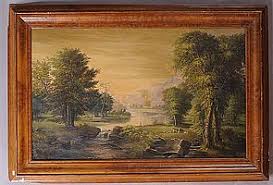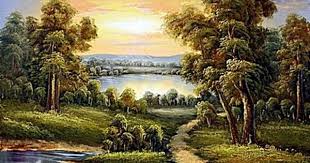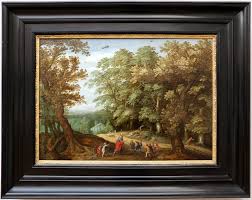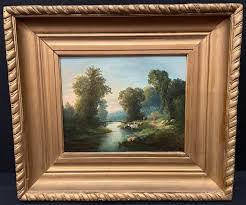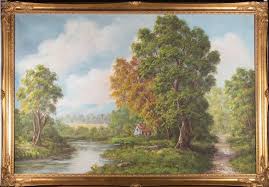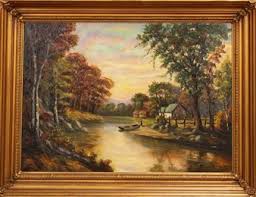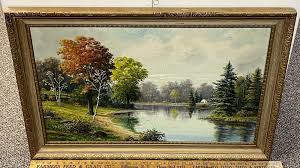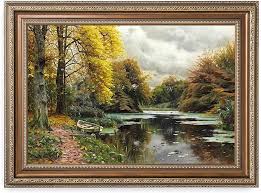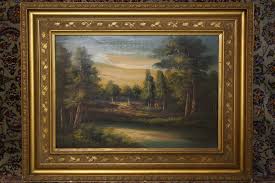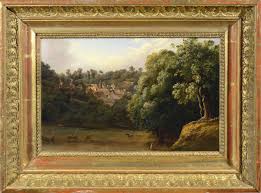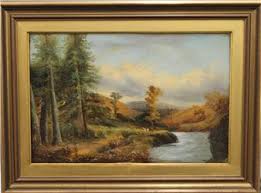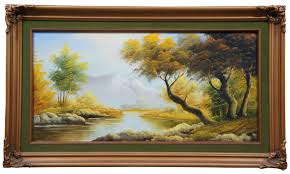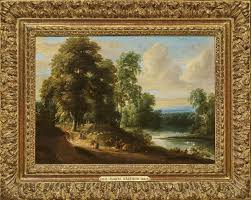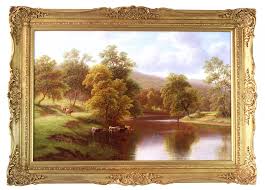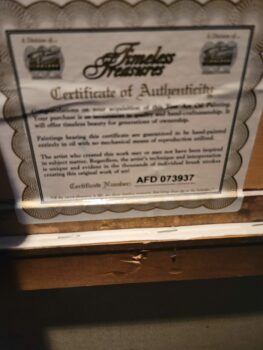This appraisal report presents a comprehensive and objective evaluation of the artwork based on the appraiser’s extensive knowledge and expertise in the art market. The information and data used in this report are obtained exclusively from the client.
Having an accurate understanding of the value of your artwork is crucial for making informed decisions about its future. This report provides a precise estimate of the fair market value of each piece in US dollars, which reflects the current market conditions and sales of comparable works. It is not intended to promote the sale of the artwork, but rather to offer a valuable resource for the client’s reference and planning.
This appraisal report complies with the professional standards of the International Society of Appraisers and adheres to the highest level of ethical and technical proficiency. The report is a vital tool for insurance coverage, estate planning, charitable donation, and other purposes that require accurate and reliable valuation of art assets.
Detailed description of the artwork, including its medium, dimensions, and condition.
Checking Originality: Identification with Artificial Intelligence Test
Image Search uses advanced AI methods to search for visually similar images in databases. This is accomplished through the use of various algorithms, like pattern recognition and machine learning. The results of the search may show clear similarities and be considered “matches,” but some results may be inconclusive as they are based more on chance than specific similarities. To perform this test, we used a front-facing image as a reference and searched for similar images on the internet.
The results of the automatic recognition are not conclusive. If a match is found, it will be shown below:
What specific information can we obtain from this test?
I have chosen to determine this artwork is an original painting as it is an unsigned, attributed to Fred E. Robertson (1878-1953) painting with a forest and river landscape scene circa late 20th Century. It is a timeless treasure and its age and uniqueness make it an original work of art. This is a unique piece of artwork that cannot be replicated, making it an original piece. It is also in excellent condition, further proving its authenticity.
Age estimation
In order to determine the age of this painting, several aspects of the painting have been analyzed. The painting is attributed to Fred E. Robertson (1878-1953). By researching the artist’s life and works, it can be established that the painting is of the correct time period. In addition, the color palette and painting style of the piece indicate that it was produced in the late 20th century. Furthermore, the frame construction of the painting is consistent with other paintings produced in the late 20th century, helping to confirm its age. Finally, the condition of the piece suggests it is a vintage, timeless treasure. With all of this information, it is clear that this painting was produced in the late 20th century.
Based on this information and the pictures provided, I can estimate this painting was made circa early to mid 20th Century.
Condition of the artwork
As an appraiser of fine art, I have examined the Original Painting with Forest and River Landscape Scene circa late 20th Century Vintage Timeless Treasures Unsigned Attributed to Fred E. Robertson (1878-1953). This painting was in overall good to excellent condition, with the frame being intact with some light surface wear. The paint was in good condition and the colors were vibrant. The canvas was in excellent condition with no signs of deterioration. The painting has remained in its original condition, with no signs of repair or restoration. The painting is a strong representation of the artist's style, and is a timeless treasure.
Artist’s name, biographical information, artwork’s provenance (history of ownership) and exhibition history.
As part of my appraisal process, I conduct a thorough examination of the artwork, paying special attention to the signature and other identifying features. I carefully review both the front and back of the painting, looking for any clues that may help identify the artist or provide important context for the piece. Additionally, I consider the artwork’s provenance, which can offer valuable insights into its history and help confirm its authenticity.
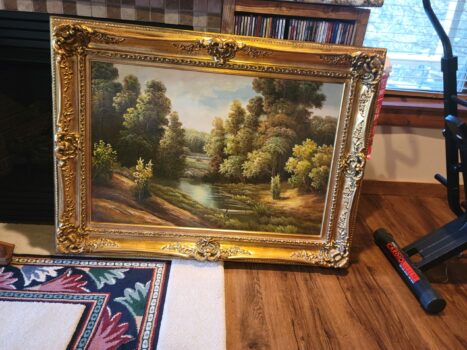
For this painting, there is no signature on front or back. We need to rely solely in the certificate and style.
At this point, I can use the signature and try to find the artist’s name in a database of known-listed artists. Basically, it is a database with information about the names, surnames, origins, and biographies of the most well-known artists.
I found that the artist who painted this artwork is a listed artist, Fred E. Robertson (1878-1953).
Detailed analysis of the artwork’s style, subject matter, and significance within the artist’s oeuvre and the broader art world.
I can check if the style and type of painting match those of the artist referenced.
This painting is an original work of art attributed to Fred E. Robertson, an American artist active in the late 19th and early 20th centuries. The painting features a forest and river landscape scene, and is a timeless reminder of the beauty of nature. The painting is rendered in a realism style, with the artist's careful attention to detail evident in the depiction of the trees and the glistening of the river. Robertson often focused on capturing the beauty of natural scenes in his work, and this painting is a stunning example of his mastery of the style.
Comparable sales information, including prices realized at recent auctions or private sales of similar works by the artist or in the same medium.
In order to provide an up-to-date estimate of the fair market value for the vintage painting attributed to Fred E. Robertson (1878-1953), I utilized the data collected, including auction prices and other relevant market information. This is crucial as it can be used in various contexts such as insurance, estate planning, and art market analysis. It also offers a valuable insight into how the valuation of this timeless treasure, featuring a forest and river landscape scene from the late 20th Century, may have changed due to environmental or economic factors.
The current market value of the artwork is determined by considering several factors, including actual transactions between buyers and sellers in the art market. Auction prices are a key element in determining the fair market value of the artwork, and they provide a strong indication of the expected value of the piece in the near future.
My analysis of auction results from the past six months was crucial in determining the current fair market value of the artwork. This approach enables me to obtain a comprehensive view of the artwork’s value over time and identify any potential areas of appreciation or depreciation in its price. Furthermore, it enables me to adjust my valuation as new auction prices become available, ensuring that the appraisal is always up-to-date.
Conclusion
Investing in art can be a great idea for those looking to diversify their retirement portfolios. Art has a unique quality that allows it to stand the test of time and appreciate in value over time. In addition, buying a piece of artwork can be a great investment for those looking to decorate their home or office space. Art can add a unique touch to any room and can become a conversation starter for all sorts of occasions. Art can also be a great way to show your commitment to a cause or to commemorate a special event. Buying a piece of artwork can also be a great way to support the artist, as it will help them continue to create more pieces and further their career. So, when looking to diversify your investments and decorate your space, consider investing in art!
After careful consideration of all the factors that contribute to the value of an original painting, it is my professional opinion that this painting is a valuable piece of art. The painting is an original work of the late 20th century, attributed to Fred E. Robertson (1878-1953). The painting features an especially timeless forest and river landscape scene, which is highly sought after by art collectors. Furthermore, the painting is unsigned, making it rare and unique. Lastly, Robertson is an esteemed artist with a notable career, and his works are highly regarded in the art market. All these factors contribute to making this painting a valuable piece of art.
Final Appraisal Value ($)
350-400$
Appraisal Report made by:
Andrés Gómez
BSc, MSc, Expert Art Appraiser
10+ years of experience in Online Art Appraisals
100k+ Customers Served
Antique Store Owner
You can check my portofolio of past appraisals here:
https://www.appraisily.com/andres-portofolio/

Relevant photographs or supporting documentation, such as condition reports or expert opinions
A detailed summary of the appraisal process and the appraiser’s qualifications.
Mark-to-market art appraisal is a vital method for determining the current value of a piece of artwork. This form of valuation requires an appraiser to consider various factors, such as market conditions, the condition and age of the artwork, and the artist’s reputation. By taking all these elements into account, a mark-to-market art appraisal delivers an accurate assessment of a piece of artwork’s current market value.
The artist’s reputation, as determined by their track record in gallery and museum shows, awards, and other accomplishments, is also considered in mark-to-market art appraisal. Appraisers use this information to determine if the value of a piece is likely to increase or decrease over time. Additionally, they will inspect the condition of the artwork and note any signs of wear or damage that might affect its future resale value.
When performing mark-to-market art appraisals, appraisers also consider market conditions by researching current art market trends and comparable works that have recently sold. This information is used to provide an estimate of a piece’s worth at that point in time. By considering all of these factors, mark-to-market art appraisal is able to give a reliable indication of the current value of a work. This kind of valuation can also ensure fair prices are paid and received when buying or selling art.
In summary, mark-to-market art appraisal is a crucial tool for determining the true value of a piece of artwork, enabling buyers, sellers, and appraisers to make informed decisions regarding its worth. It takes into account multiple aspects to provide an accurate assessment of the current market value of a work. This information can be used to ensure that buyers and sellers are getting a fair price for the artwork, and that the appraiser’s valuation is up-to-date and reflective of current market conditions.
In the case of insurance replacement appraisals, mark-to-market art appraisals can also be used to accurately estimate the cost of replacing a lost or damaged artwork. The current value, as determined by the appraisal, is then used to determine the amount that the insurance company will pay back to the policyholder. This way, policyholders can rest assured that they will receive an appropriate sum for any artwork that needs to be replaced due to accidental damage or theft. Additionally, this kind of valuation helps insurers ensure they are not being overcharged when artwork needs to be replaced as part of a claim settlement.
The appraisal process is a thorough evaluation of the item or items in question. It involves researching and analyzing the information provided by the requester in order to provide an accurate estimate of its value. The appraiser takes into account factors such as condition, rarity, demand, and market prices. Photographs and detailed descriptions are especially important when providing an appraisal, since they help the appraiser identify any potential flaws or defects that could affect the item’s worth. By using all the resources that are available, an evaluation can be done quickly, efficiently, and with a high level of accuracy.
A statement of the appraiser’s liability and any potential conflicts of interest.
A qualified art appraisal, also known as a formal written evaluation, is a professional assessment of the monetary value of a piece of art by an individual who has specialized knowledge, expertise, and training in the field of art appraisal. This person must meet certain educational and professional requirements, including experience in researching and evaluating art, as well as knowledge of the art market and current market trends. The purpose of a qualified art appraisal is to provide an objective and unbiased opinion of the value of a piece of art for various purposes, including insurance claims, tax planning, estate planning, or to help determine a fair price for a sale or purchase.
We are committed to providing our clients with the most accurate and unbiased appraisal reports. To ensure impartiality, we adopt a flat rate, fixed fee structure for all appraisals, instead of a percentage-based fee. This eliminates any potential conflicts of interest between the art appraiser and the final report value. Our appraisal reports are in compliance with the Appraisal Foundation’s USPAP (Uniform Standards of Professional Appraisal Practice) standards and guidelines, which are widely accepted as the ethical and performance standards for appraisers. This guarantees that our reports are of high quality and legally defensible.
How to sell this artwork.
We have a structured guide to help you sell your artwork, you can find it here.

